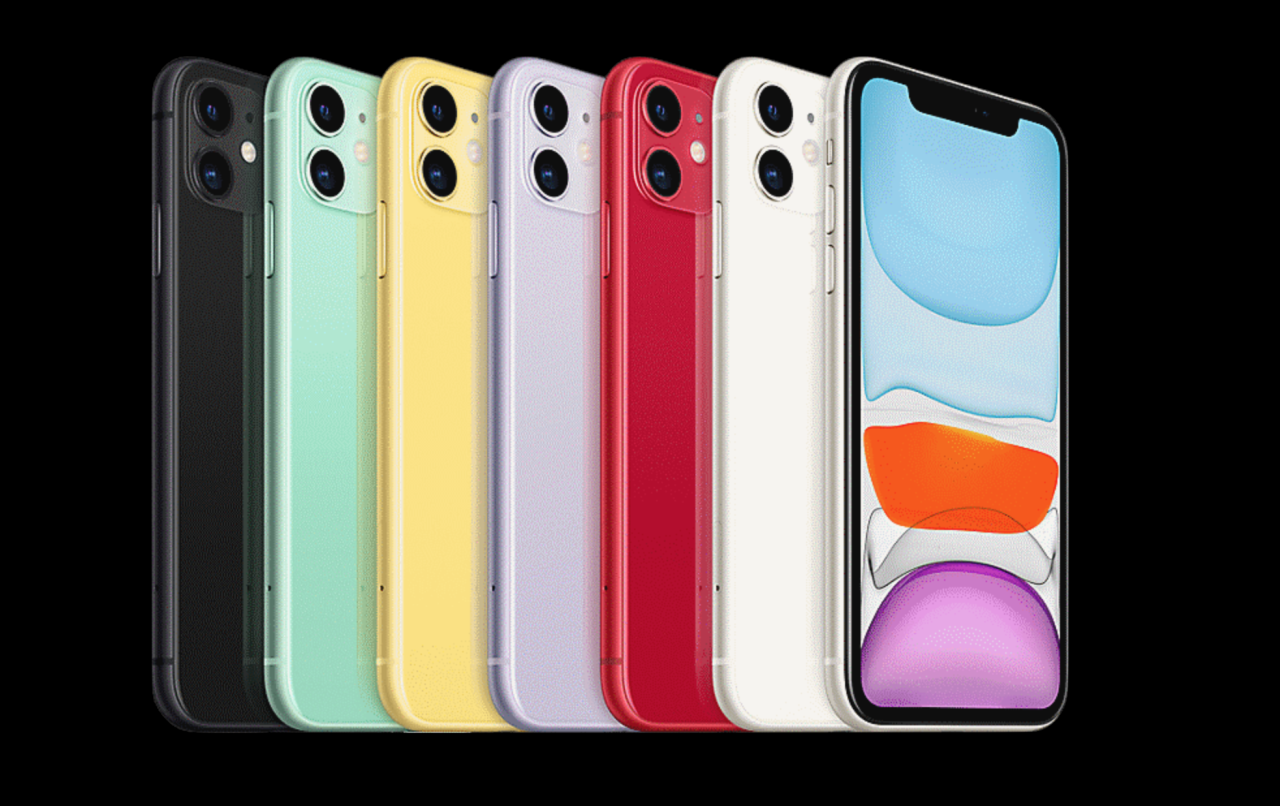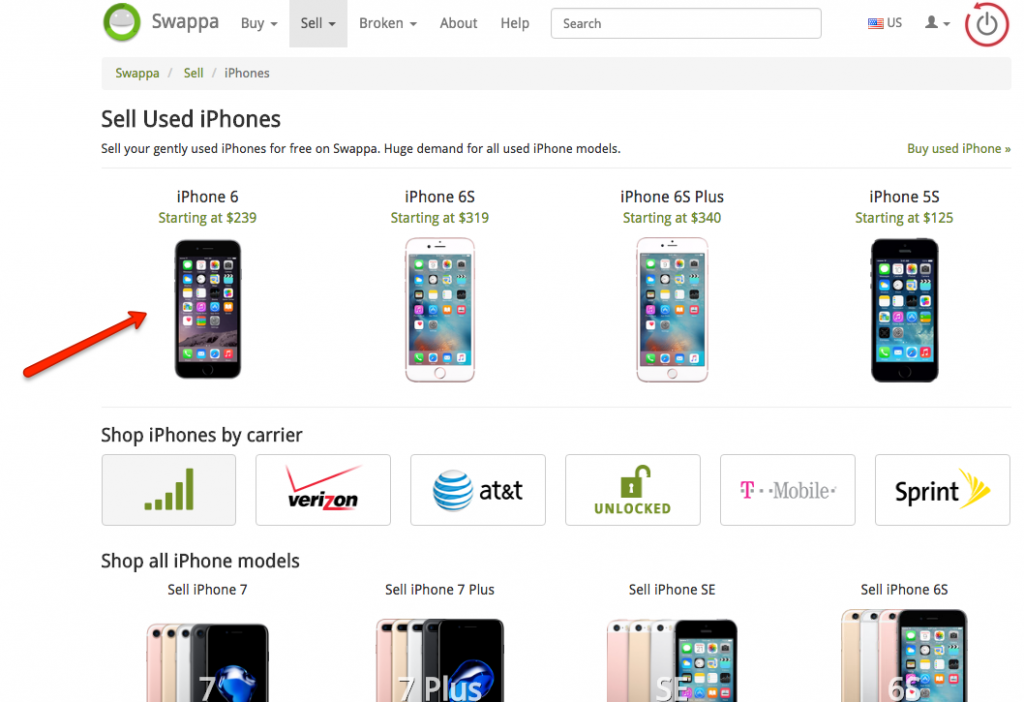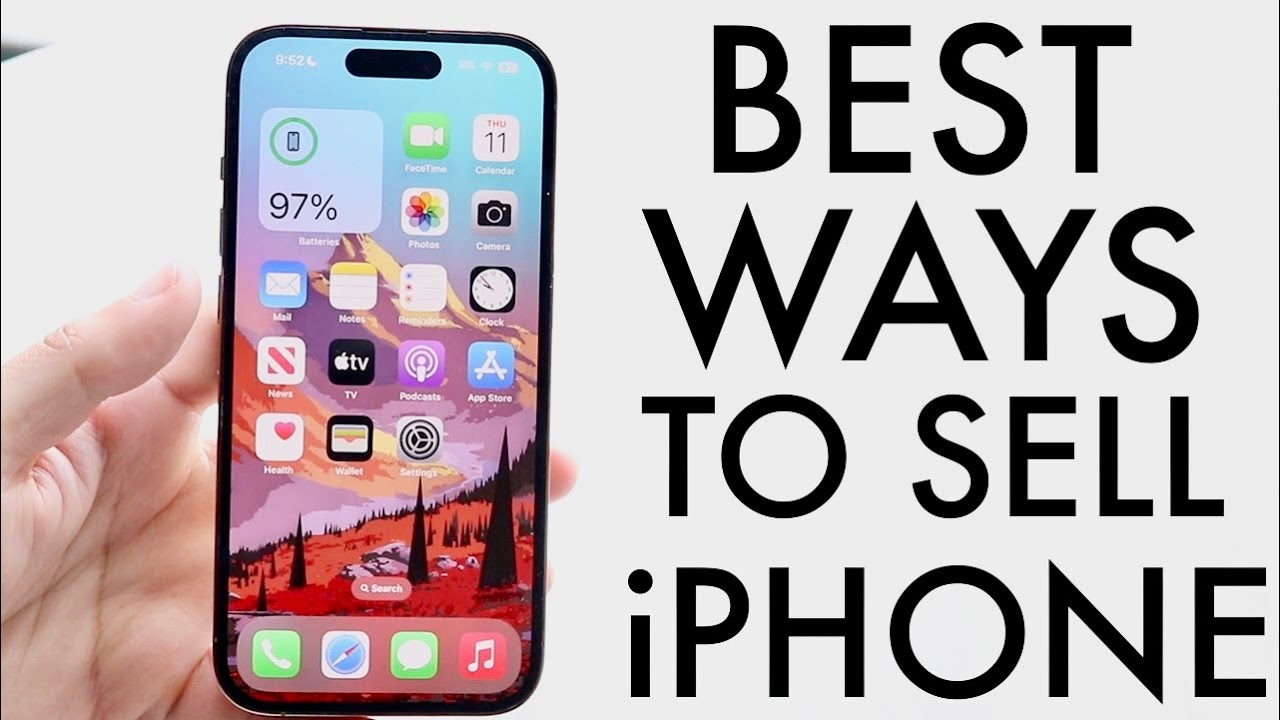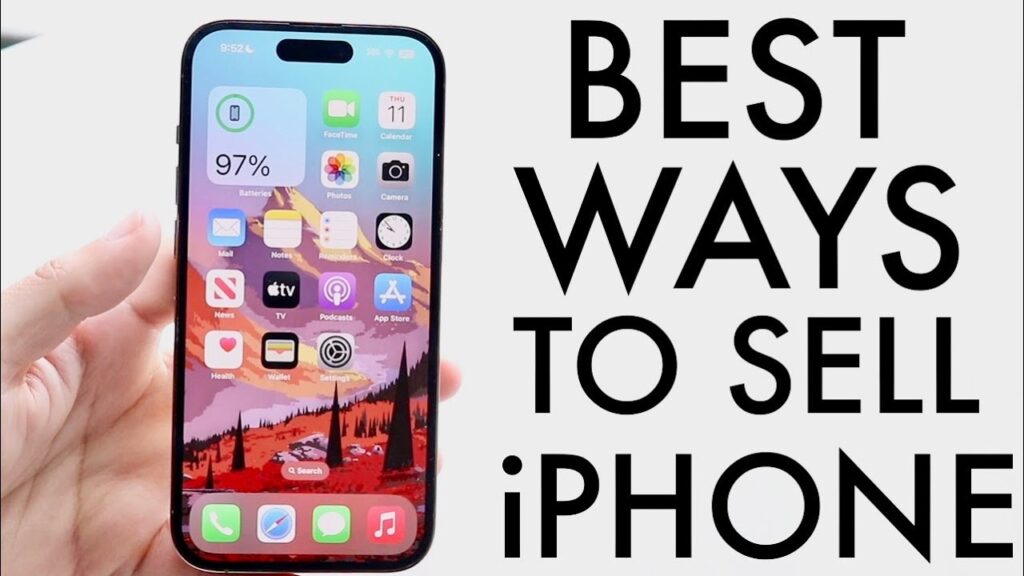Market Research

The used iPhone market is a thriving one, with millions of devices being sold each year. The average resale value of an iPhone varies depending on the model, condition, and storage capacity, but you can generally expect to get a good price for your old device.
Target Audience
The target audience for selling an iPhone is anyone who is looking for a used iPhone. This includes people who are on a budget, people who want a specific model or feature that is not available on new iPhones, and people who want to upgrade to a newer iPhone but don’t want to pay full price.
Average Resale Value
The average resale value of an iPhone varies depending on the model, condition, and storage capacity. However, you can generally expect to get a good price for your old device. According to a recent study by SellCell, the average resale value of an iPhone 12 Pro Max is $600, while the average resale value of an iPhone 11 Pro Max is $400.
Pricing Strategy
Determining the optimal selling price for your iPhone involves considering several key factors. These include the device’s condition, storage capacity, model, and current market demand.
Thoroughly research the prices of similar iPhones offered by competitors. Online marketplaces, such as eBay and Craigslist, provide valuable insights into current market trends and pricing.
Pricing Models
Two common pricing models for selling iPhones are fixed price and auction.
- Fixed Price: You set a predetermined price for your iPhone and potential buyers can choose to purchase it at that price or not.
- Auction: You list your iPhone for auction and interested buyers bid against each other, with the highest bidder securing the purchase.
Pros and Cons of Pricing Models
Fixed Price
- Pros: Control over the selling price, no uncertainty about the amount received.
- Cons: Potential to undervalue the iPhone or miss out on higher offers.
Auction
- Pros: Potential to maximize the selling price based on market demand.
- Cons: Uncertainty about the final price, possibility of receiving a lower offer than expected.
Sales Channels
Choosing the right sales channel is crucial for maximizing the value of your iPhone. Each channel offers unique advantages and drawbacks, so it’s important to understand them before making a decision.
The primary sales channels for iPhones include online marketplaces, buyback programs, and local stores.
Online Marketplaces
- Advantages: Wide reach, potential for higher prices, convenience.
- Disadvantages: Competition, fees, shipping costs.
Online marketplaces like eBay and Amazon provide a large pool of potential buyers, increasing the chances of getting a good price. However, they often charge listing fees and take a percentage of the sale price.
Buyback Programs
- Advantages: Convenience, guaranteed payment, no need to deal with buyers.
- Disadvantages: Lower prices than other channels, may not accept all models or conditions.
Buyback programs offered by Apple and other retailers provide a hassle-free way to sell your iPhone. They typically offer lower prices than other channels but guarantee payment and handle all aspects of the sale.
Local Stores
- Advantages: In-person transactions, potential for higher prices, ability to negotiate.
- Disadvantages: Limited reach, lower convenience.
Local stores like pawn shops and electronics retailers offer the advantage of in-person transactions, allowing you to negotiate the price and get cash immediately. However, they may have a limited customer base, which can affect the price you receive.
Product Preparation
Preparing your iPhone for sale is crucial to ensure a smooth and successful transaction. This involves cleaning, resetting, and removing personal data to protect your privacy and present the device in its best condition.
Creating a compelling product description and taking high-quality photos are essential for attracting potential buyers. Highlight the key features, specifications, and condition of the iPhone. Use natural lighting and take clear photos from different angles to showcase the device’s appearance.
Packaging and Shipping
Proper packaging and shipping are essential to prevent damage during transit. Use anti-static bags to protect the iPhone from electrostatic discharge. Wrap the device in bubble wrap or foam for cushioning. Choose a sturdy box that is slightly larger than the iPhone and fill any empty space with packing peanuts or shredded paper for additional protection.
Negotiation and Closing

Negotiating with potential buyers and handling their questions and objections is crucial for a successful sale. Closing the deal smoothly ensures a positive transaction for both parties.
Negotiation Strategies
- Be prepared to negotiate: Research the market value of your iPhone and set a realistic asking price. Be willing to compromise within reason.
- Understand the buyer’s perspective: Put yourself in the buyer’s shoes to anticipate their concerns and address them proactively.
- Be confident and professional: Present your iPhone’s features and condition clearly and confidently. Maintain a professional demeanor throughout the negotiation.
- Listen actively: Pay attention to the buyer’s questions and concerns. Address them directly and provide honest answers.
- Consider the buyer’s budget: Be willing to adjust your asking price if the buyer has a limited budget. However, do not undervalue your iPhone.
Handling Questions and Objections
Be prepared to answer questions about the iPhone’s condition, usage history, and any repairs or modifications.
- Address objections professionally: Acknowledge the buyer’s concerns and provide evidence to address them. For example, if the buyer is concerned about battery life, show them the battery health report.
- Be honest and transparent: Avoid hiding any flaws or issues with the iPhone. Transparency builds trust and increases the chances of a successful sale.
- Offer solutions: If the buyer has a valid concern, offer solutions to mitigate it. For instance, if the buyer is worried about the lack of a charger, include one in the sale.
Closing the Sale
Once the negotiation is complete, it’s time to close the sale.
- Confirm the terms: Review the agreed-upon price, payment method, and any other conditions of the sale.
- Provide documentation: Prepare a receipt or invoice for the buyer’s records.
- Exchange payment and iPhone: Ensure that the payment is processed securely and that the buyer receives the iPhone in good condition.
- Follow up: After the sale, reach out to the buyer to ensure their satisfaction and address any additional questions.
Legal Considerations
Selling an iPhone involves legal implications that need to be understood to ensure a smooth and secure transaction. These considerations include warranty coverage, consumer protection laws, and protection against fraud.
It’s crucial to be aware of the warranty status of the iPhone being sold. If the iPhone is still under warranty, the seller should disclose this information to the buyer. Failure to do so could result in legal consequences if the buyer discovers the warranty coverage after the sale.
Consumer Protection Laws
Consumer protection laws vary by jurisdiction. It’s important to be familiar with the laws applicable to the sale of electronic devices in the specific location where the transaction is taking place. These laws may provide certain rights and protections to consumers, such as the right to a refund or replacement if the iPhone is defective.
Protection Against Fraud
Fraud is a common concern in online transactions. To protect against fraud, sellers should be cautious when dealing with unknown buyers. It’s advisable to request payment through secure methods, such as PayPal or a credit card with fraud protection. Additionally, sellers should avoid sharing personal information, such as their Social Security number or bank account details.
Importance of Documentation
Obtaining a receipt or documentation for the sale is essential to protect both the seller and the buyer. The receipt should include details such as the date of the sale, the price, the condition of the iPhone, and the contact information of both parties. This documentation can serve as proof of the transaction in case of any disputes.
Marketing and Promotion
Marketing and promotion play a crucial role in the successful sale of your iPhone. They help create awareness, generate leads, and ultimately drive sales. By implementing effective marketing strategies, you can reach your target audience, showcase the value of your iPhone, and increase your chances of finding a buyer.
Creating Effective Marketing Content
Craft compelling social media posts that highlight the key features and benefits of your iPhone. Use high-quality images and videos to showcase its condition and functionality. Create targeted email campaigns to reach potential buyers who are interested in similar devices. Optimize your online listings with detailed descriptions, clear pricing, and relevant s to improve visibility and attract qualified leads.
Post-Sale Support

Providing excellent post-sale support is crucial for maintaining customer satisfaction and fostering long-term relationships. By promptly addressing inquiries, resolving issues effectively, and offering a warranty or guarantee, businesses can enhance the customer experience and build trust.
Handling Inquiries and Resolving Issues
Establish clear channels for customers to reach support, such as email, phone, or live chat. Respond to inquiries promptly and professionally, providing detailed and helpful information. For complex issues, escalate to a higher level of support as needed. Implement a tracking system to monitor the status of inquiries and ensure timely resolution.
Offering a Warranty or Guarantee
A warranty or guarantee provides peace of mind to customers and demonstrates confidence in the product’s quality. Clearly Artikel the terms and conditions of the warranty, including the duration, coverage, and exclusions. Ensure the warranty is easy to understand and accessible to customers.
Frequently Asked Questions
How do I determine the best price for my iPhone?
Research comparable models on online marketplaces, consider factors like storage capacity, condition, and carrier compatibility, and compare prices with competitors to set a competitive price.
What are the different sales channels available to sell my iPhone?
Online marketplaces like eBay and Amazon, buyback programs offered by carriers and retailers, and local stores or pawn shops are all viable options with varying advantages and disadvantages.
How can I prepare my iPhone for sale to maximize its value?
Clean and reset the device, remove personal data, create a compelling product description, and take high-quality photos that showcase its condition.
What are some tips for negotiating with potential buyers?
Be prepared to discuss the condition and features of your iPhone, be willing to compromise on price within reason, and be confident in your asking price while remaining open to offers.
How can I protect myself from fraud when selling my iPhone?
Meet in a public place, verify the buyer’s identity, and obtain a receipt or documentation for the sale to ensure your protection.






